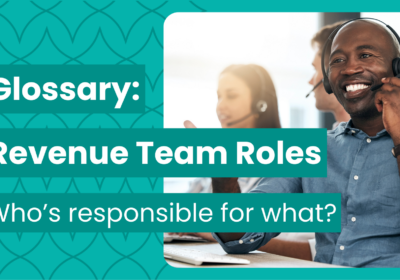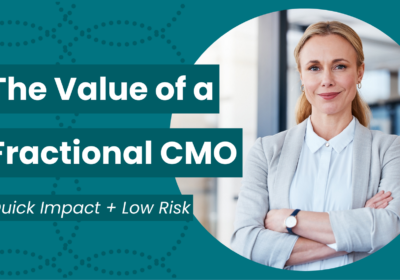
If you didn’t catch my last post, then please take a second and at least skim it. In it, I share what a brand narrative is, how to create one, and the potential ROI for your brand.
That said, creating your brand narrative is never one and done. As your company grows, your brand narrative has to evolve. This allows you to keep up with new internal and external challenges that every growing brand faces. What milestones in your growth will affect your brand narrative?
In this three-article series, we’ll look at nine messaging moments in your company’s growth, what they mean, and how you can rise to meet the challenge.
1. Startup Branding: Building a Story to Launch Your Business
Starting up a business takes guts, hustle, and, if you hope to spark interest and create immediate sales momentum, a strong story. This is perhaps the most obvious time to ensure your brand is well-differentiated and supported by a concise, customer-focused narrative.
You only get one shot at launching your business, and you don’t want to miss the chance to make a solid first impression.
But for many new businesses, “branding” stops at logo design. This is well short of a fully-articulated brand strategy and isn’t a sustainable strategy for growth.
While your new company invests in carefully planned product development, processes, hiring, and infrastructure, messaging typically evolves in an ad hoc response to individual sales opportunities. Before long, leadership wonders how they ended up with a customer mix that doesn’t match the original intent of the business.
To create qualified business opportunities, those that best align with the value your business can deliver, you need to start with a story that establishes boundaries to qualify and disqualify would-be buyers. Clear positioning right out of the gate is essential to building your strongest, most sustainable customer portfolio.
All of that said, your first story won’t be your last story. Let’s look at other message-changing moments that you’re sure to encounter as your business grows and evolves.
2. When You’ve Outgrown Your Brand Story
Your fledgling business has grown, and you’re not what you once were. You’ve added talent, refined your processes, listened to your customers and responded with new services or products that provide them with greater value. Your “Story Version 1.0” no longer fits, and that’s OK. Your story should evolve as your business changes.
This is a perfect time to revisit your brand strategy and story. Most likely, when you first started the business, you (or a very small team) owned the brand narrative. Today, your business represents a more complex network of relationships: employees, partners, customers, and perhaps investors. This is an opportune time to capture key stakeholder input and ensure that the story you shape resonates with all the relationships that matter most to your business.
You’ll want to be thoughtful in the message-updating process to clarify roles, especially for your internal stakeholders. Clearly differentiating who has a voice, who has a vote, who’s only there to provide input will make the process easier. Everyone’s input is valuable, but ultimately, the marketing department (with the support of executive leadership) will own the execution and outcomes of the updated brand. Make sure you set your marketing leaders up for success with the ownership they need to lead this process forward.
Once you’ve updated your messaging to match your growth, it’s time to start thinking about the future. Let’s take a look at how strategic storytelling can help you build your pipeline.
3. Next-Level Messaging: Storytelling to Build the Upstream Pipeline
It’s a common scenario: Many growth-focused businesses reach their first $5M, $10M, or even $25M through a strong sales effort and 1:1 relationships that have driven exclusive referrals. It’s not too hard to win if you’re the only vendor at the table, and the buyer has already expressed a specific need. But eventually, the referral-based growth trajectory slows down, and leadership recognizes that to reach their goals, the company will have to engage audiences that don’t yet know the brand, and this means showing up in new, more competitive circles.
At this point, marketing moves from being reactive and experimental, to proactive and strategic. Before you push into new markets and audiences, you’ll need to make sure your story stands out and can be delivered consistently across channels: from the first digital impression to the sales closing conversation.
This is usually when it becomes obvious that the company has what we call a “What” message. All of your successful, early-stage selling used messaging from the later stages of the sales funnel when your customers were ready to buy. That kind of message tends to be very product, service, process, feature, or company focused. These are all useful positioning strategies in a sales conversation, but not effective for marketing up-funnel to potential buyers who are not yet ready to engage with sales.
To capture future buyer interest, you have to lead with a “So What” message: a story that starts with the buyer, their pains, goals, and values, and then naturally leads to your solution. It sounds easy, but if it were, most businesses would have this dialed in. And surprisingly, most don’t. In fact, most businesses suffer from nearsightedness when it comes to messaging. They are simply too close to the subject matter to see objectively and struggle to translate their value proposition in a way that buyers can easily understand. As a result, many businesses fall back on copy-cat methods, ending up with a story that looks and sounds like their competitors.
Once you’ve made the shift from “What” to “So What,” you’ll be in a strong position to elevate conversations with potential buyers, moving engagement up the funnel from “ready to buy” to “ready to learn more” and creating a healthy engine for pipeline growth.
What Comes Next?
You’ve made great progress but beware of getting too comfortable with your brand story. As you grow, your business will continue to evolve, and your story will need to keep pace. Keep your eyes open for these other key messaging milestones.
Check out part two of the series to learn about the next three milestones in your brand narrative’s growth.
While reading these posts, you may wonder what point you’re at and what you need to do to solidify your brand narrative. If so, then let’s sit down and talk about it. We’re happy to use our brand narrative expertise to help you find your story.

- Glossary: Revenue Team Roles - April 26, 2024
- Loot Rentals: Client Story - April 15, 2024
- The value of a fractional CMO: Quick impact and low risk - April 2, 2024



